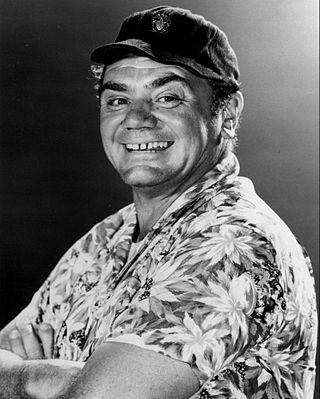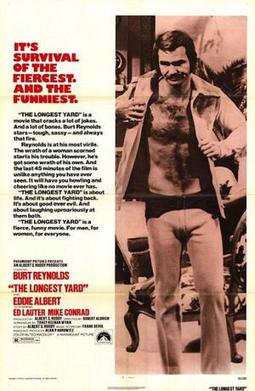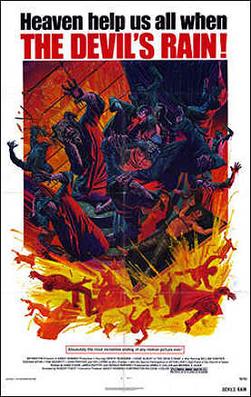
Lee Marvin was an American film and television actor. Known for his bass voice and premature white hair, he is best remembered for playing hardboiled "tough guy" characters. Although initially typecast as the "heavy", he later gained prominence for portraying anti-heroes, such as Detective Lieutenant Frank Ballinger on the television series M Squad (1957–1960). Marvin's notable roles in film included Charlie Strom in The Killers (1964), Rico Fardan in The Professionals (1966), Major John Reisman in The Dirty Dozen (1967), Ben Rumson in Paint Your Wagon (1969), Walker in Point Blank (1967), and the Sergeant in The Big Red One (1980).

A hobo is a migrant worker in the United States. Hoboes, tramps, and bums are generally regarded as related, but distinct: a hobo travels and is willing to work; a tramp travels, but avoids work if possible; a bum neither travels nor works.

Bound for Glory is a 1976 American biographical film directed by Hal Ashby and loosely adapted by Robert Getchell from Woody Guthrie's 1943 partly fictionalized autobiography Bound for Glory. The film stars David Carradine as folk singer Woody Guthrie, with Ronny Cox, Melinda Dillon, Gail Strickland, John Lehne, Ji-Tu Cumbuka and Randy Quaid. Much of the film is based on Guthrie's attempt to humanize the desperate Okie Dust Bowl refugees in California during the Great Depression.

Ernest Borgnine was an American actor whose career spanned over six decades. He was noted for his gruff but relaxed voice and gap-toothed Cheshire Cat grin. A popular performer, he also appeared as a guest on numerous talk shows and as a panelist on several game shows.

The Dirty Dozen is a 1967 American war film directed by Robert Aldrich and starring Lee Marvin with an ensemble supporting cast including Ernest Borgnine, Charles Bronson, Jim Brown, John Cassavetes, Richard Jaeckel, George Kennedy, Ralph Meeker, Robert Ryan, Trini Lopez, Telly Savalas, Donald Sutherland, Clint Walker and Robert Webber. Set in 1944 during World War II, the film follows the titular penal military unit of twelve convicts as they are trained as commandos by the Allies for a suicide mission ahead of the Normandy landings.

Freighthopping or trainhopping is the act of surreptitiously boarding and riding a freightcar, which is usually illegal.

Robert Burgess Aldrich was an American film director, producer, and screenwriter. An iconoclastic and maverick auteur working in many genres during the Golden Age of Hollywood, he directed mainly films noir, war movies, westerns and dark melodramas with Gothic overtones. His most notable credits include Vera Cruz (1954), Kiss Me Deadly (1955), The Big Knife (1955), Autumn Leaves (1956), Attack (1956), What Ever Happened to Baby Jane? (1962), Hush...Hush, Sweet Charlotte (1964), The Flight of the Phoenix (1965), The Dirty Dozen (1967), and The Longest Yard (1974).

Keith Ian Carradine is an American actor. In film he is known for his roles as Tom Frank in Robert Altman's Nashville, E. J. Bellocq in Louis Malle's Pretty Baby, and Mickey in Alan Rudolph's Choose Me. On television he is known for his roles as Wild Bill Hickok on the HBO series Deadwood, FBI agent Frank Lundy on the Showtime series Dexter, Lou Solverson in the first season of FX's Fargo, Penny's father Wyatt on the CBS sitcom The Big Bang Theory, and U.S. President Conrad Dalton on the CBS political drama Madam Secretary.

The Longest Yard is a 1974 American prison sports comedy-drama film directed by Robert Aldrich, written by Tracy Keenan Wynn, based on a story by producer Albert S. Ruddy, and starring Burt Reynolds, Eddie Albert, Ed Lauter, Mike Conrad and James Hampton. The film was released as The Mean Machine in the United Kingdom and South Africa. The film follows a former NFL player recruiting a group of prisoners and playing football against their guards. It features many real-life football players, including Green Bay Packers legend Ray Nitschke.

The Devil's Rain is a 1975 supernatural horror film directed by Robert Fuest. The ensemble cast includes William Shatner, Tom Skerritt, Ernest Borgnine, Eddie Albert, Ida Lupino and Keenan Wynn. John Travolta made his film debut in a minor role. During filming, Travolta converted to the Scientology religion after co-star Joan Prather gave him a copy of the book Dianetics written by Scientology founder L. Ron Hubbard. Satanist Anton LaVey is credited as the film's technical advisor and appeared in the film playing a minor role. Although it takes place in an unspecified part of the American Southwest, the movie was shot in Durango, Mexico.

The Polar Express is a 2004 American animated children's film directed by Robert Zemeckis, who co-wrote the screenplay with William Broyles Jr., based on the 1985 children's book of the same name by Chris Van Allsburg. It stars Tom Hanks, Daryl Sabara, Nona Gaye, Jimmy Bennett, and Eddie Deezen. The film depicts human characters using live action and motion capture computer animation, with production sequences for the latter taking place from June 2003 to May 2004. Set on Christmas Eve, it tells the story of a young boy who sees a mysterious train bound for the North Pole stop outside his window and is invited aboard by its conductor. He joins other children as they embark on a journey to visit Santa Claus, who is preparing for Christmas.

The Oregon, Pacific and Eastern Railway is an Oregon-based short line railroad that began near Eugene as the Oregon and Southeastern Railroad (O&SE) in 1904. O&SE's line ran 18 miles (29 km) along the Row River between the towns of Cottage Grove and Disston. The Oregon, Pacific & Eastern Railway Company incorporated in 1912, purchased the physical assets of the O&SE two years later, and shortened their total trackage to operate 16.6 miles (26.7 km) from an interchange yard with the Southern Pacific Railroad at Cottage Grove, east to a 528' x 156' turnaround loop at Culp Creek. The last of this track was closed and scrapped in 1994, and ownership of its abandoned right of way property was later reverted to the state of Oregon to become one of the first-ever Government/Private Sector cooperative partnership Rails to Trails programs in the US, forming the Row River National Recreation Trail. A successor corporation now operates a communications company and a narrow-gauge line at Wildlife Safari.

Leon Ray Livingston (1872–1944) was a famous hobo and author, travelling under the name "A-No.1" and often referred to as "The Rambler." He perfected the hobo symbols system, which let other hobos know where there are generous people, free food, jobs, vicious dogs, and so forth. He was not a poor man; he simply preferred a life of travelling the country by train to sitting at home. In his memoir The Ways of the Hobo, Livingston admitted that he was uneducated, but began his self-education at the age of 35.
Stanley L. Hough was an American movie executive and film and television producer.

The Legend of Lylah Clare is a 1968 American drama film released by Metro-Goldwyn-Mayer and directed by Robert Aldrich. The film stars Peter Finch, Kim Novak, Ernest Borgnine, Michael Murphy, and Valentina Cortese. The film was based on a 1963 DuPont Show of the Week TV drama of the same name co-written by Wild in the Streets creator Robert Thom.

The CTA Holiday Train is a Chicago 'L' train which traditionally runs during the winter holidays, from November to December. Six cars are traditional passenger cars adorned with seasonal decorations and bright lights. The interior of these cars are adorned with multi-color lights, red bows, garland, and red and green overhead lighting. The hand poles are transformed into inedible candy canes. Santa Claus rides on an open-air flatcar and waves to the passengers coming aboard from his sleigh.

Row River National Recreation Trail is a rails to trails conversion in the U.S. state of Oregon. It follows the Row River for 16.2 miles (26.1 km) between Cottage Grove and Culp Creek, passing by Dorena Lake, and provides access to many forest trails of Umpqua National Forest.
A shack is a type of small house, usually in a state of disrepair.
Charles Tyner was an American film, television and stage character actor best known, principally, for his performances in the films Harold and Maude (1971), Emperor of the North Pole (1973), The Stone Killer (1973), The Longest Yard (1974), Evilspeak (1982), Planes, Trains and Automobiles (1987) and Pulse (1988).
The Road is an autobiographical memoir by Jack London, first published in 1907. It is London's account of his experiences as a hobo in the 1890s, during the worst economic depression the United States had experienced up to that time. He describes his experiences hopping freight trains, "holding down" a train when the crew is trying to throw him off, begging for food and money, and making up extraordinary stories to fool the police. He also tells of the thirty days that he spent in the Erie County Penitentiary, which he described as a place of "unprintable horrors," after being "pinched" (arrested) for vagrancy. In addition, he recounts his time with Kelley's Army, which he joined up with in Wyoming and remained with until its dissolution at the Mississippi River.
















